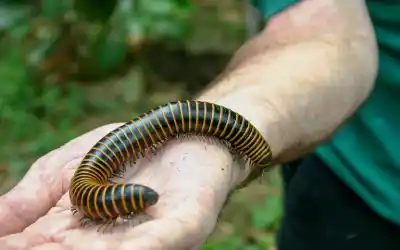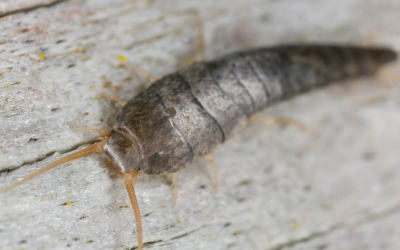Almost like clockwork (depending on environmental conditions), millipedes migrate in large numbers and become quite a nuisance for many homeowners during this time of year. Some migrations in the past were so large that it became necessary to apply sand on slippery railroad tracks for traction of locomotive drive wheels due to the squished millipedes! These days, millipedes remain very active in Florida, where there are currently over 50 species in existence. Thankfully, only a few of these species migrate in large numbers. At Florida Pest Control, we know how distressing seeing a ton of millipedes can be. Our experts are here to share everything you need to know about the plight of millipedes here in Florida—read on to learn more!
Common Millipedes in the Southeast
The types of millipedes to be most concerned about include:
- Yellow-Banded Millipede (Anadenobolus monilicornis) is known to exist in numbers high enough to cause homeowners grief. Although the Yellow-Banded Millipede is not a naturally occurring species, populations have grown quite large over the years. They’re often seen crawling over patios, sidewalks, and up the sides of buildings.
- The Florida Ivory Millipede occasionally migrates but rarely in numbers that will cause any alarm. This millipede is often seen crossing roads and sidewalks. They occasionally invade patios but rarely in the high numbers we see other millipedes migrate at.
- There are two species of Flat-Backed Millipedes that migrate in extremely high numbers during the fall. The first is known as the Greenhouse Millipede (Oxidus gracilis) and the second is sometimes called the Cyanide Millipede (Asiomorpha coarctata) because of its ability to secrete hydrogen cyanide. The two look very much alike and are almost indistinguishable. Flat-Backed Millipedes are much smaller, ranging from about ½” to 1” in length. The smaller size allows them to enter homes and businesses through cracks in thresholds, sliding glass doors, windows, etc. This migration usually takes place in late summer and fall (September through November).
How to Prevent Millipedes
Controlling millipedes can be a challenge due to their behavior and high populations. Knowing a little about their biology and habits will help considerably. A thorough treatment of the grounds, including ornamental beds, is necessary. However, in the case of millipede control, it is best that mulch is raked back to allow the control product to be applied where the millipedes are harboring. If the turf has heavy thatch build-up, aeration will help reduce the thatch, eliminating a major food source for the millipedes. By making sure you’re doing this on a normal rotation, you can successfully prevent millipedes
Need Help with Migrating Millipedes?
At Florida Pest Control, we understand why millipedes are such a concerning pest. Not only are they frightening to look at, but they can migrate in the hundreds! Our experts are happy to help with any millipede concerns you may have, whether it’s preventing them or getting rid of them.


